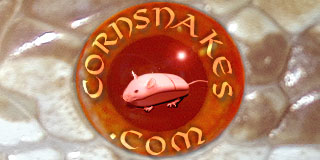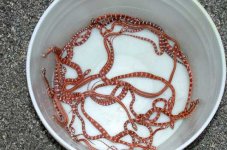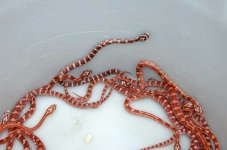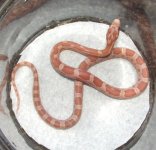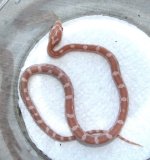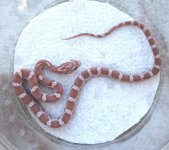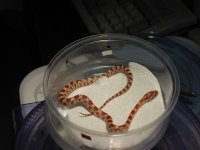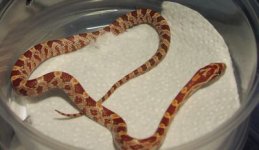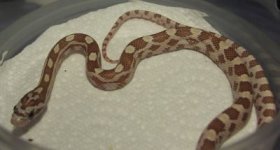SODERBERGD
Active member
I'm finding that the visual distinction between ultra and ultramel is not always clear. Here is a brood of snakes from what I thought were ultramel motley X ultramel motley. Obviously, one of the parents is actually an ultra since there were no amels in the lot. It is very hard to distinguish between the adults of this 'morph' sometimes. The two parents are remarkably alike. I would have sworn they were both ultramel motlies. I'll post images of the parents later.
If color intensity is the most reliable way to tell an ultra hatchling from an ultramel hatchling, I obviously have some ultras and many ultramels. If these babies are an indication of how subtly different ultras and ultramels are as neonates, we're in for a bumpy ride. I say this because when you see the parents, you'll swear they're both ultramels. Hence, I suspect that some of the lighter ones in this bunch are actually ultras, even though they are light colored like ultramels. I'll get some close-ups of their eyes to see if we can see differences there.
Don
www.cornsnake.NET
If color intensity is the most reliable way to tell an ultra hatchling from an ultramel hatchling, I obviously have some ultras and many ultramels. If these babies are an indication of how subtly different ultras and ultramels are as neonates, we're in for a bumpy ride. I say this because when you see the parents, you'll swear they're both ultramels. Hence, I suspect that some of the lighter ones in this bunch are actually ultras, even though they are light colored like ultramels. I'll get some close-ups of their eyes to see if we can see differences there.
Don
www.cornsnake.NET
